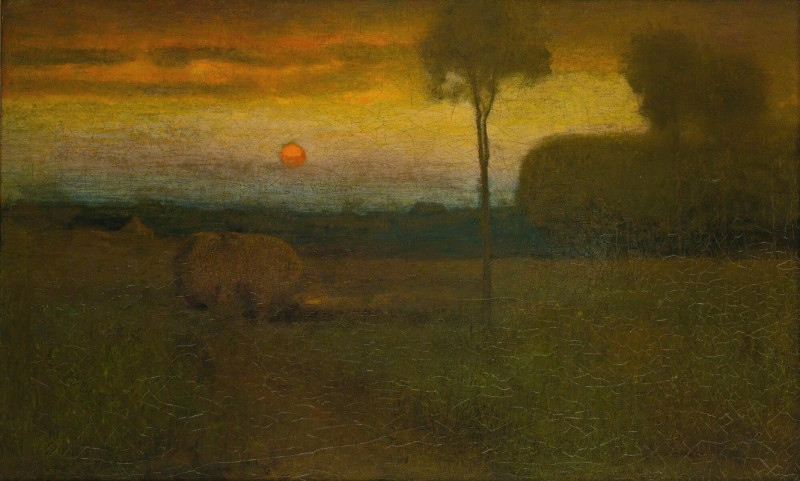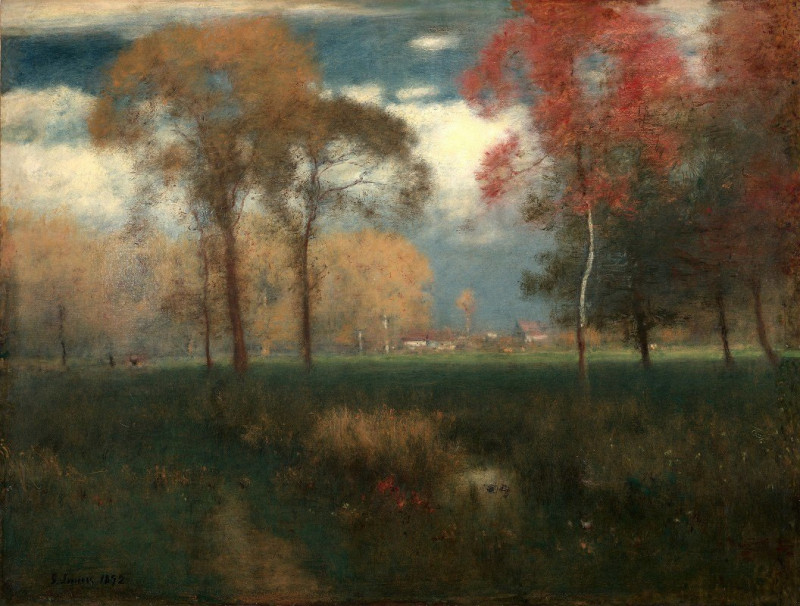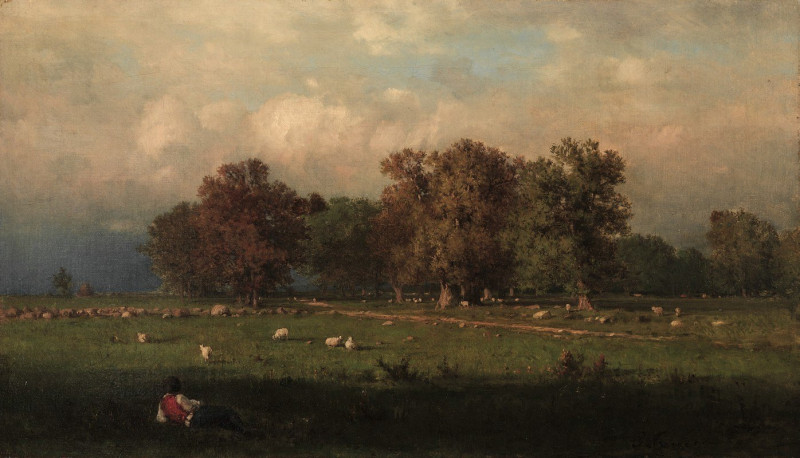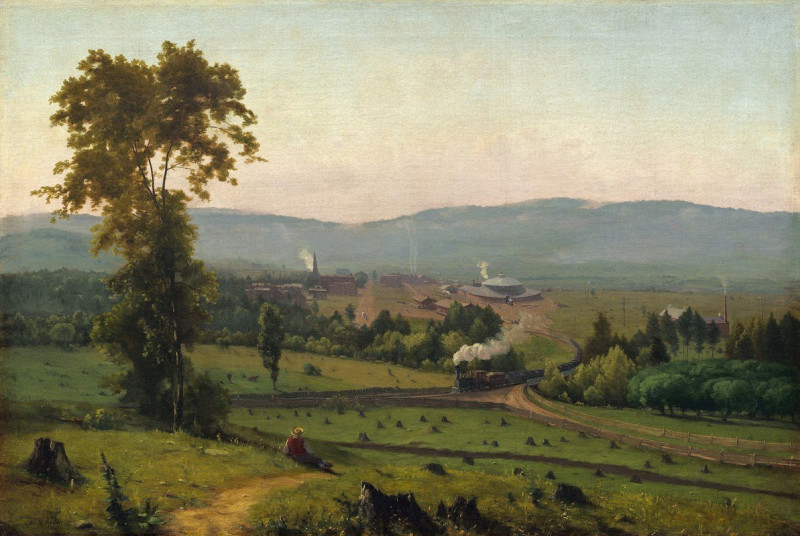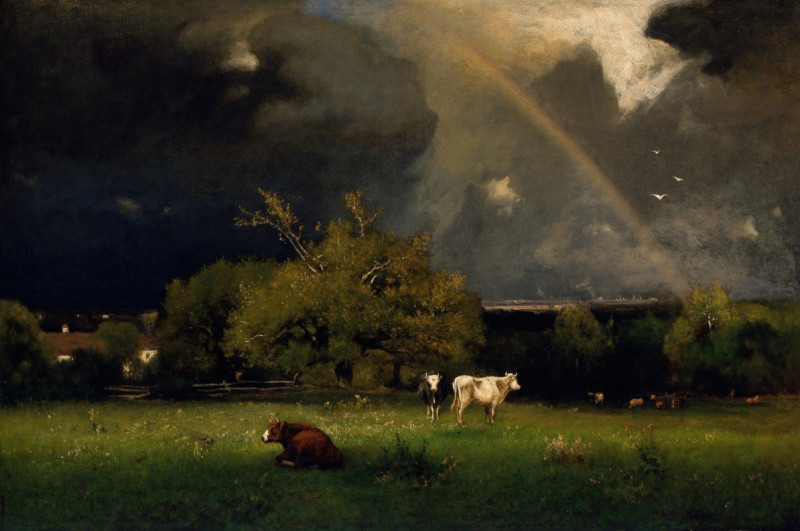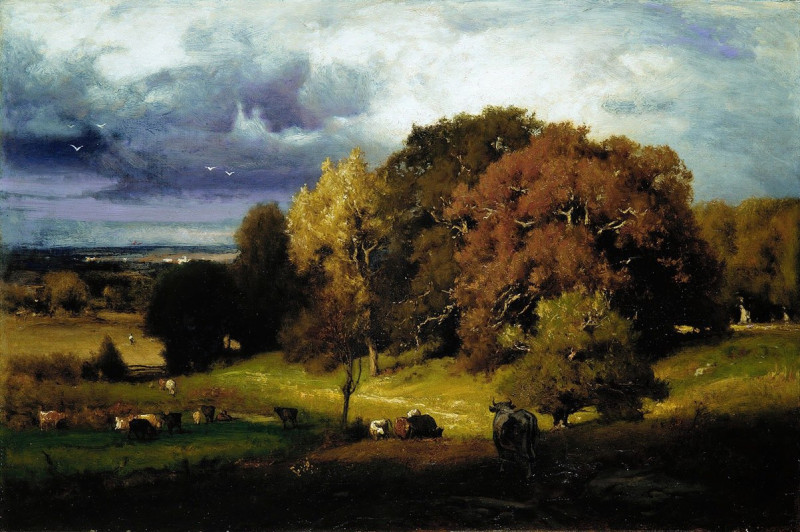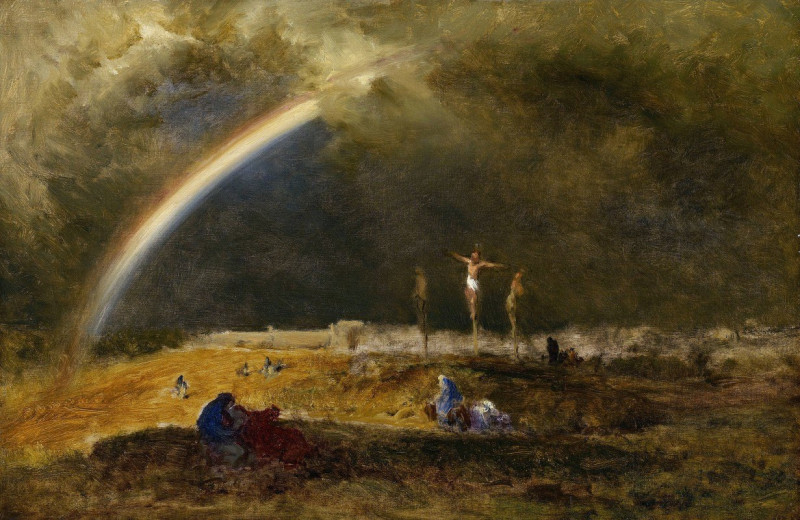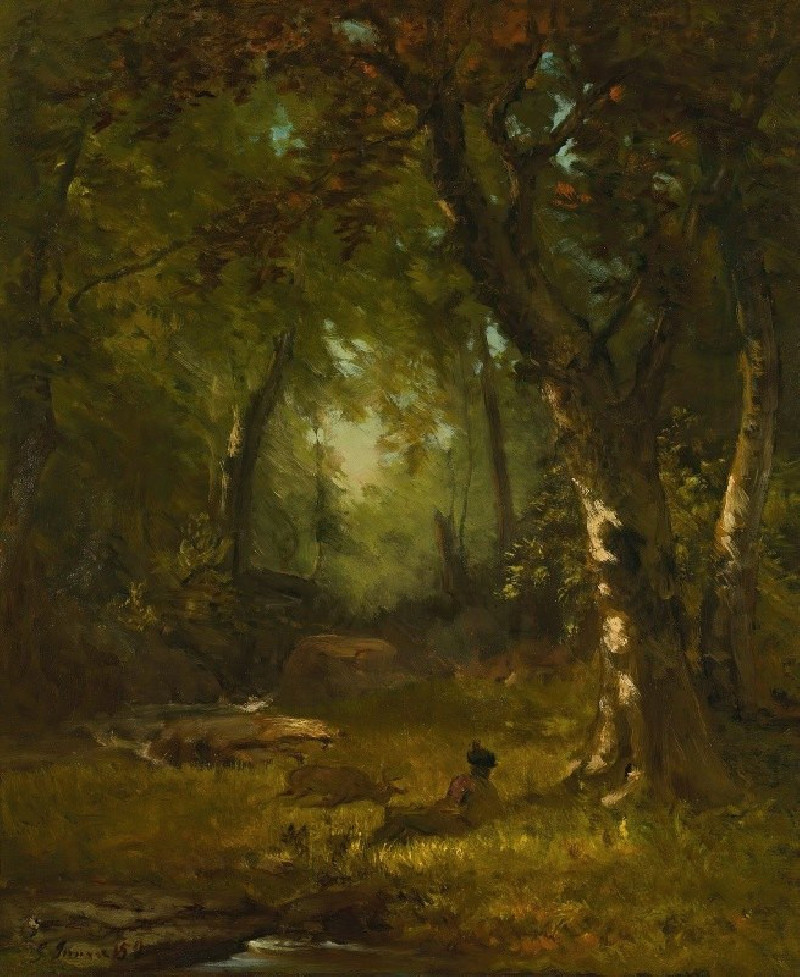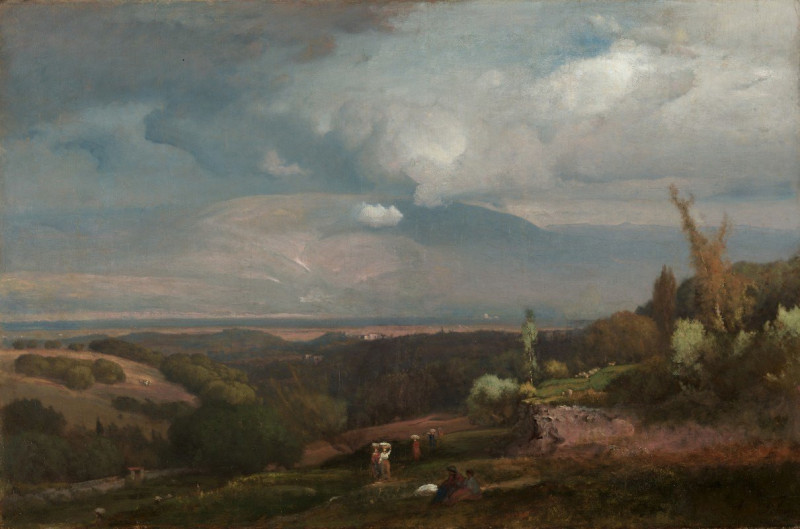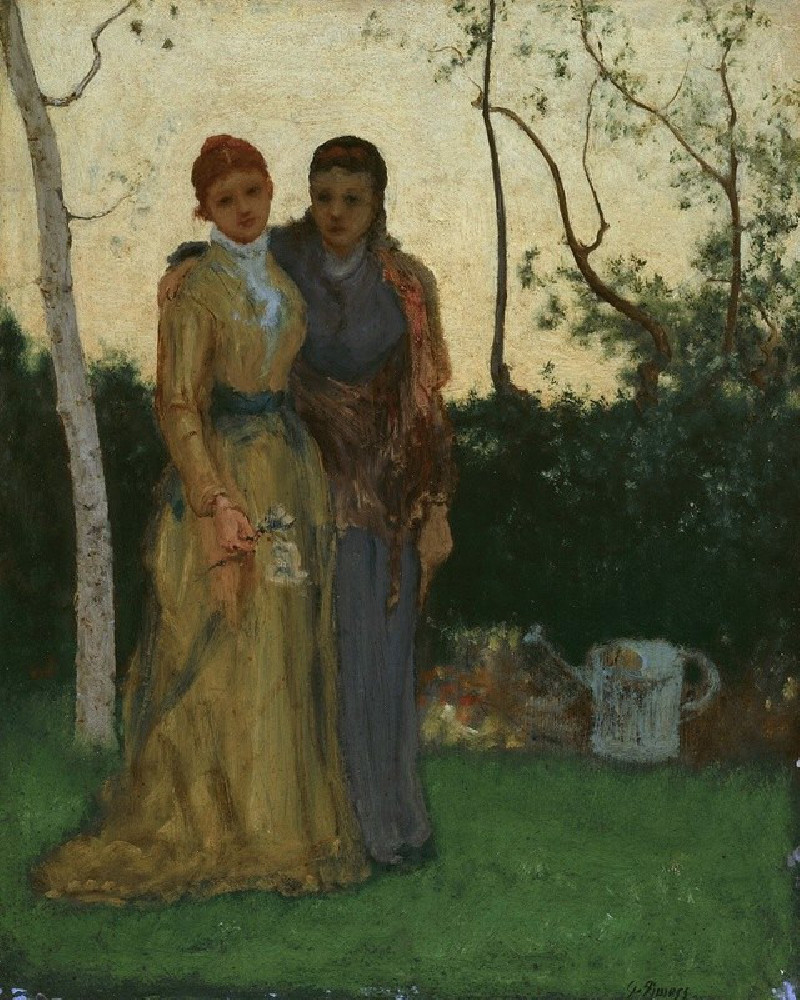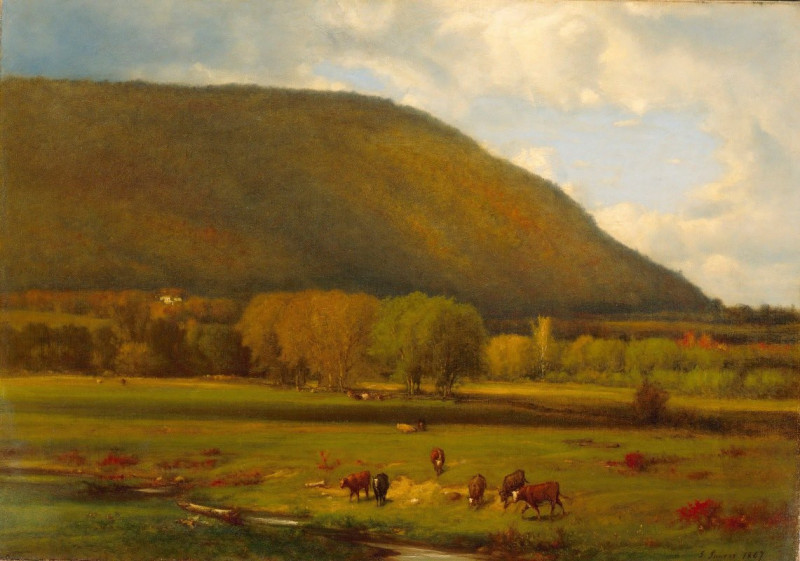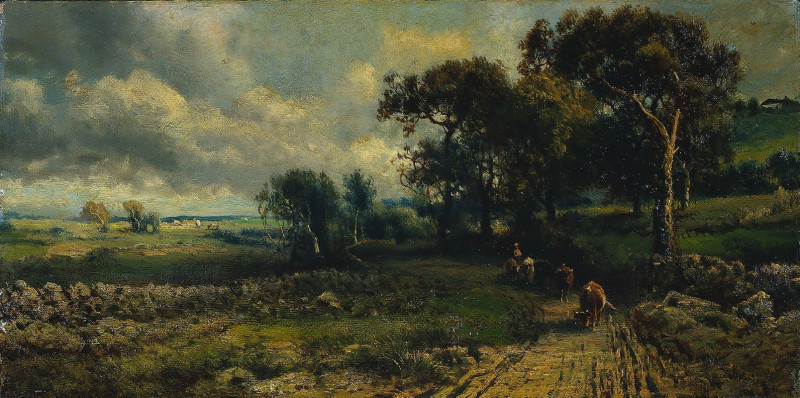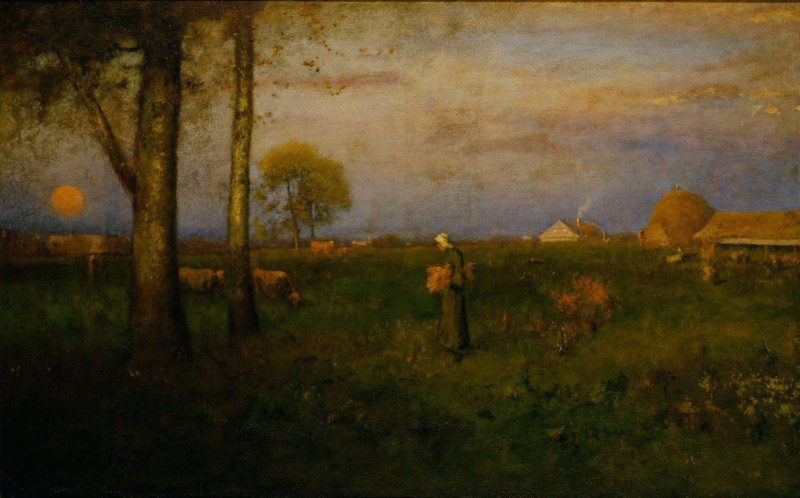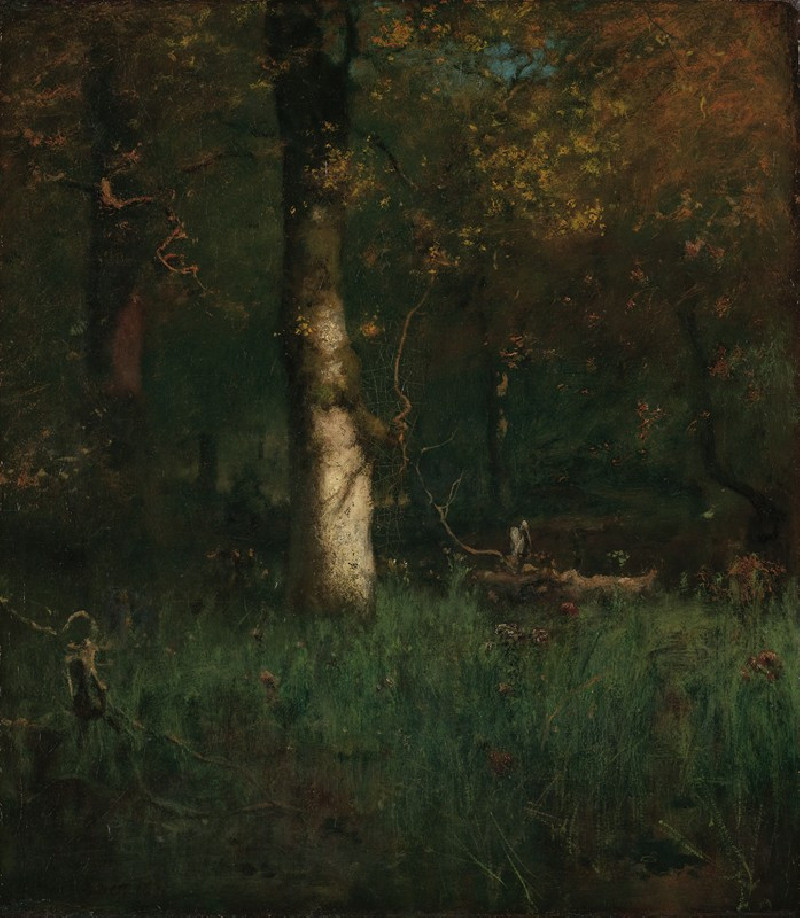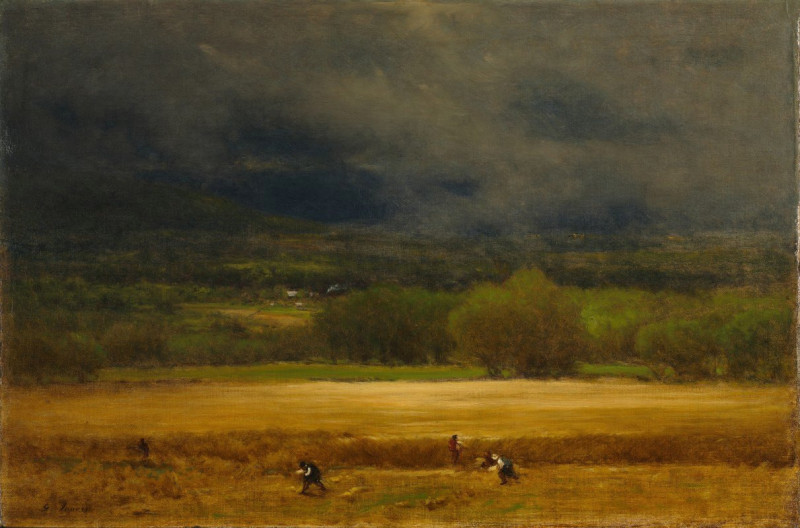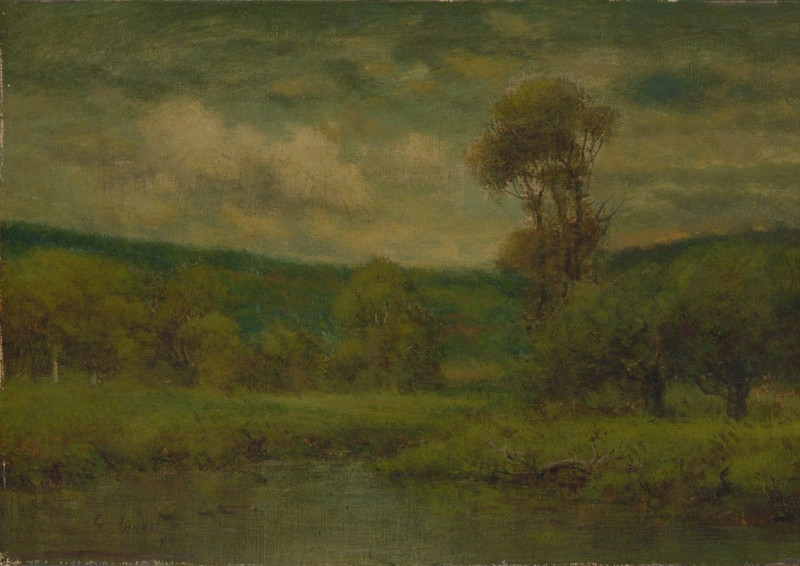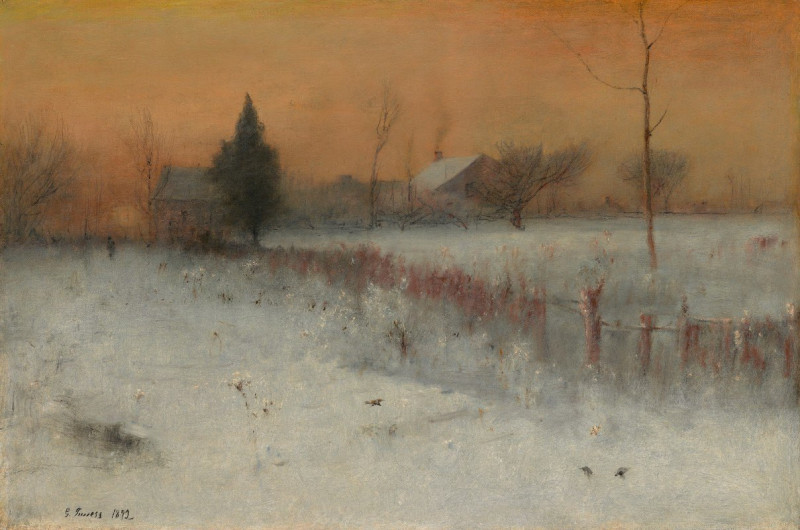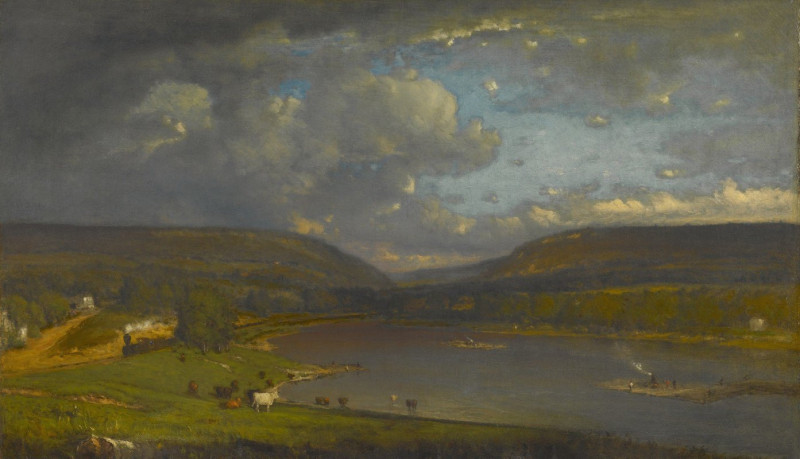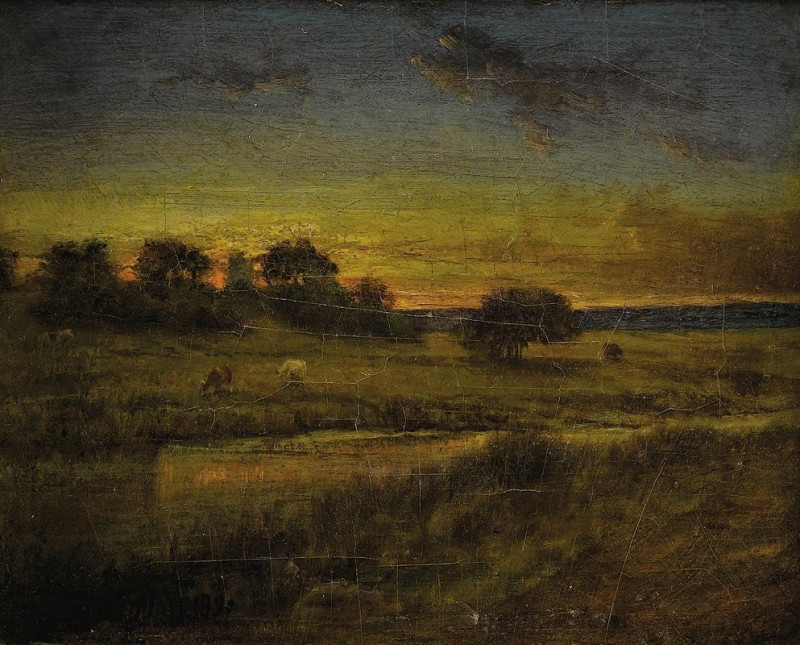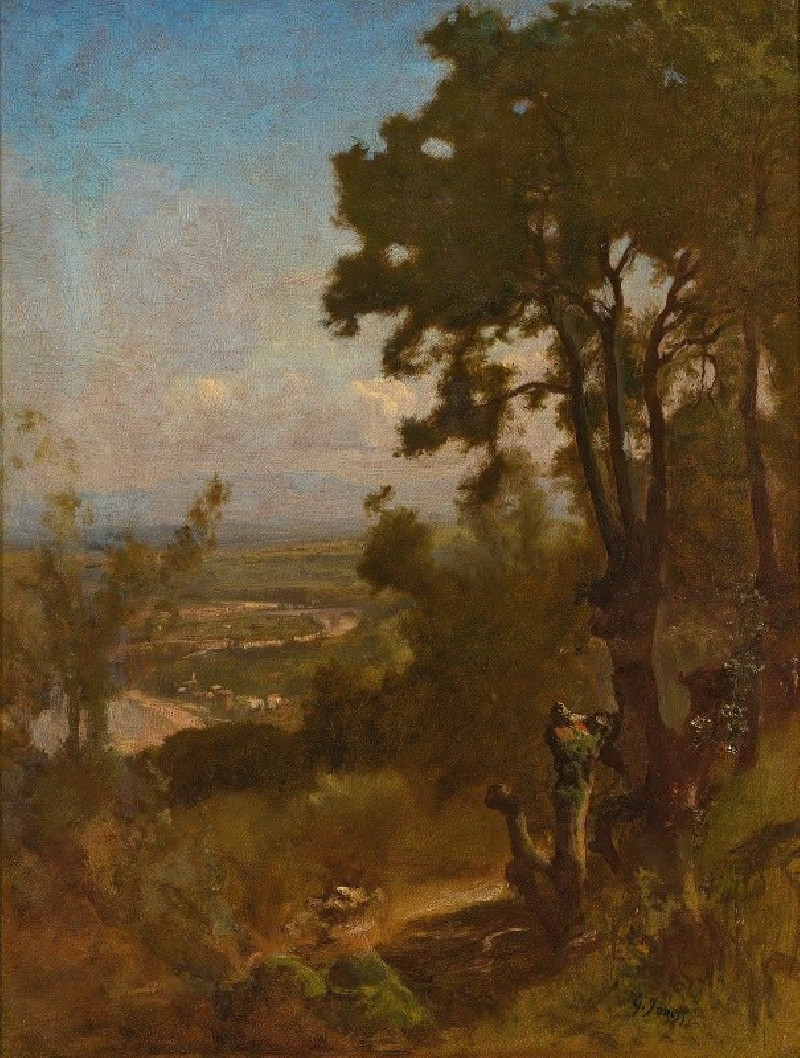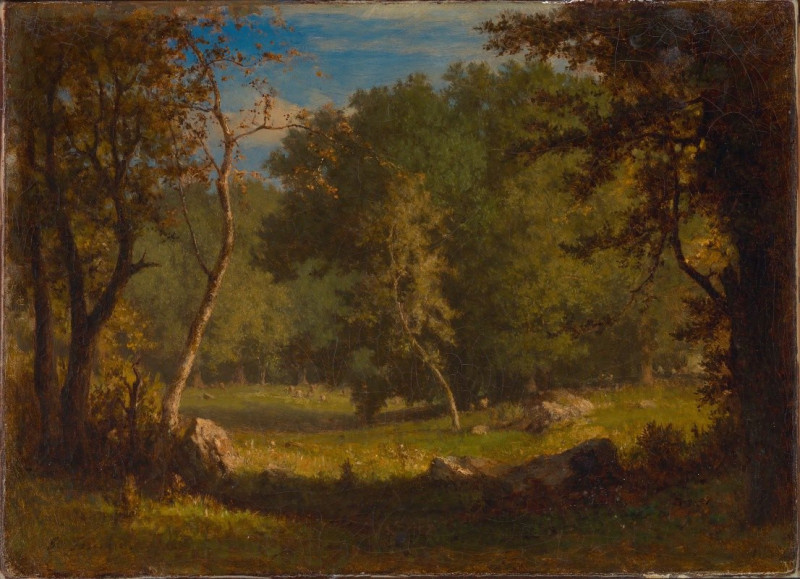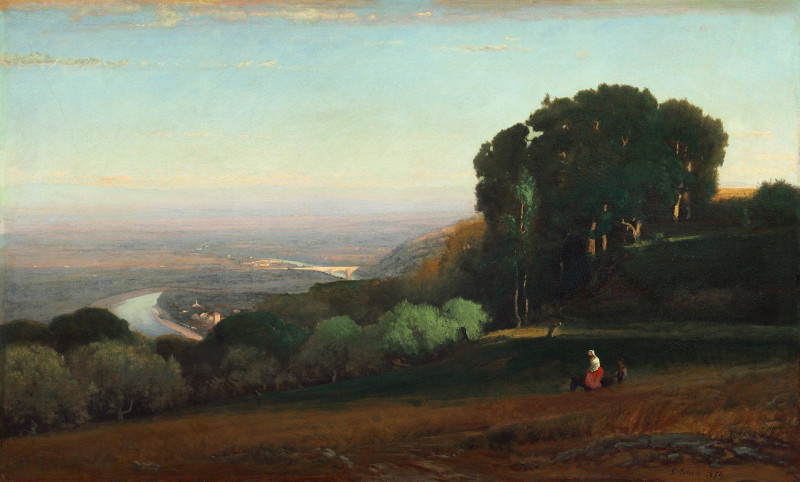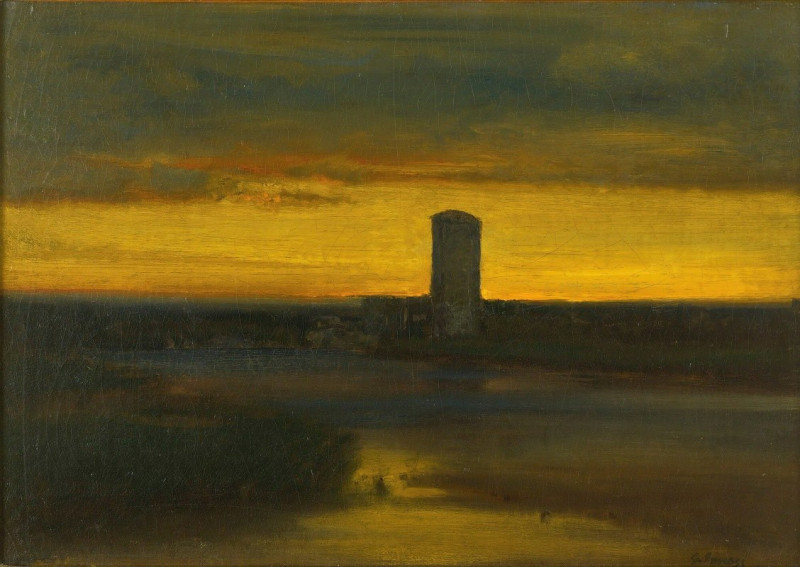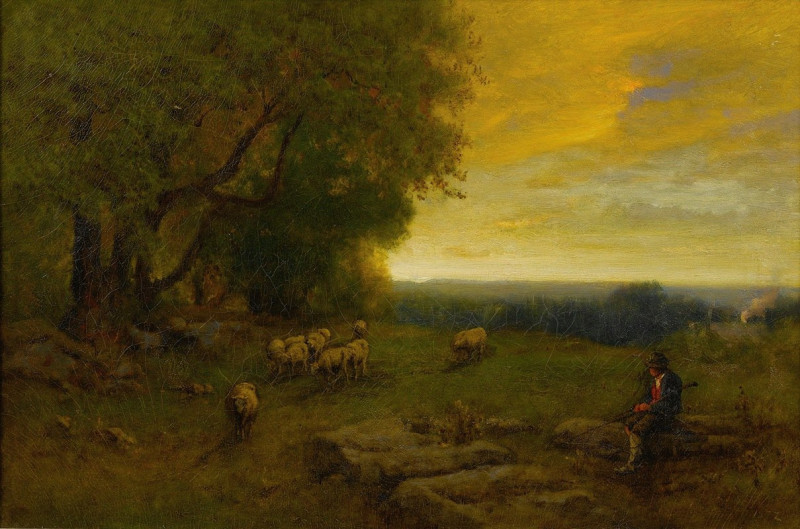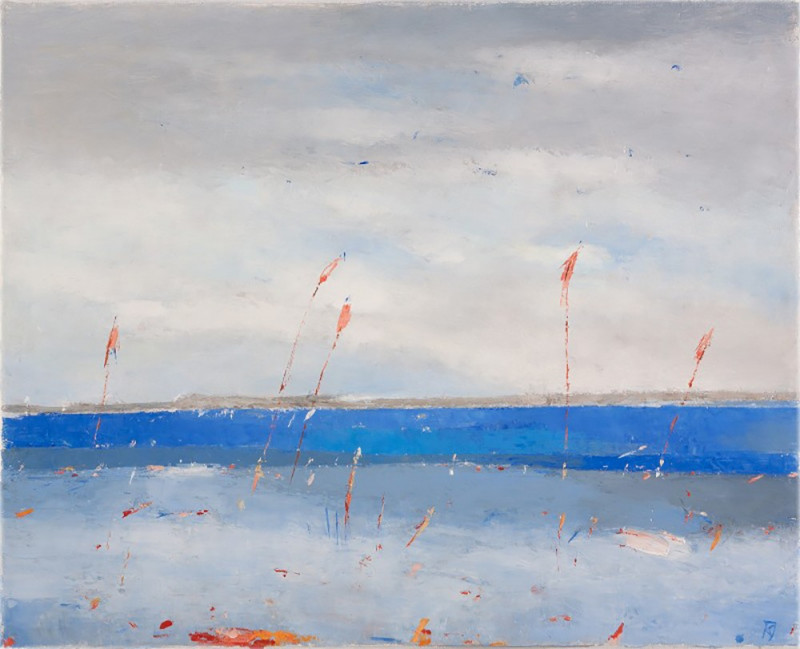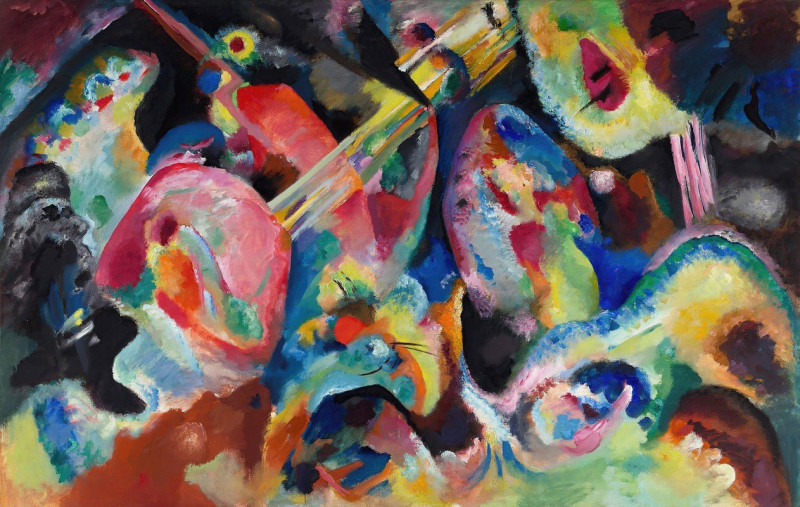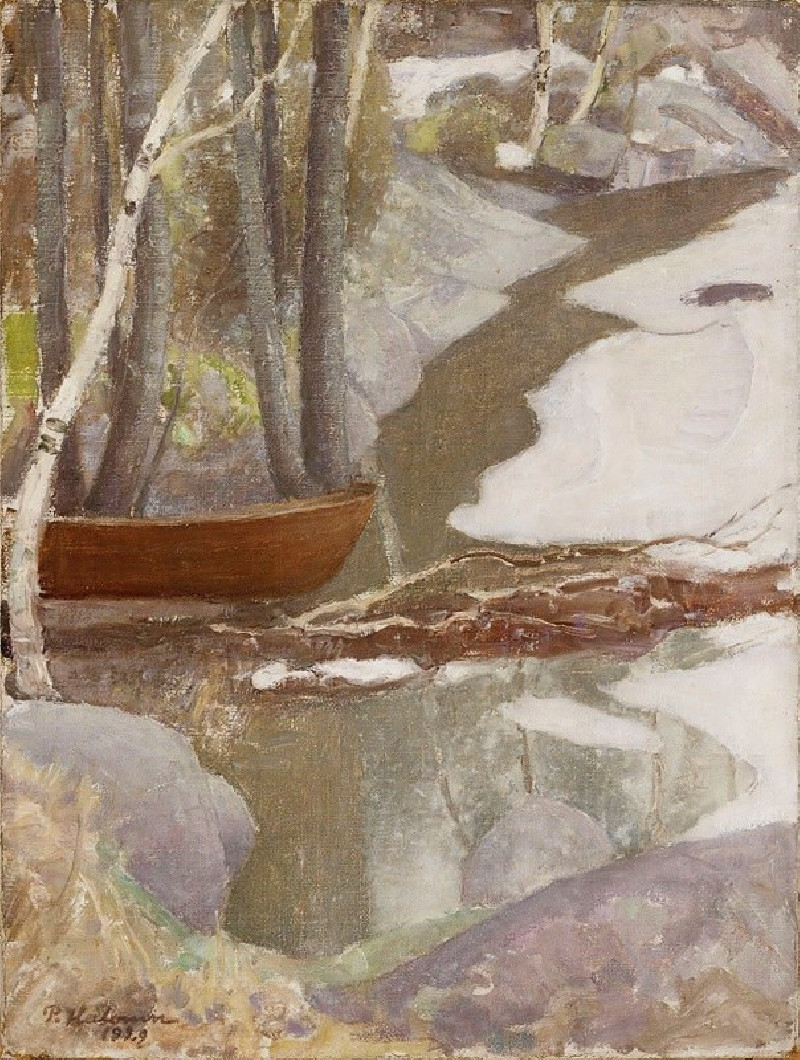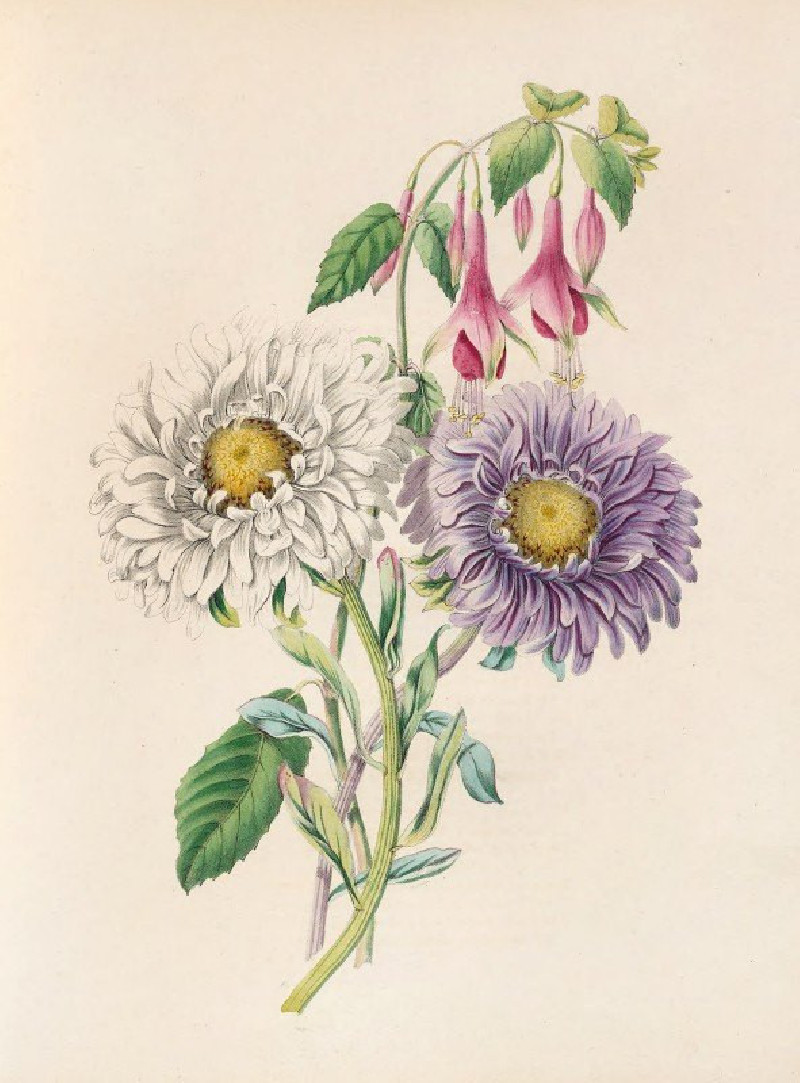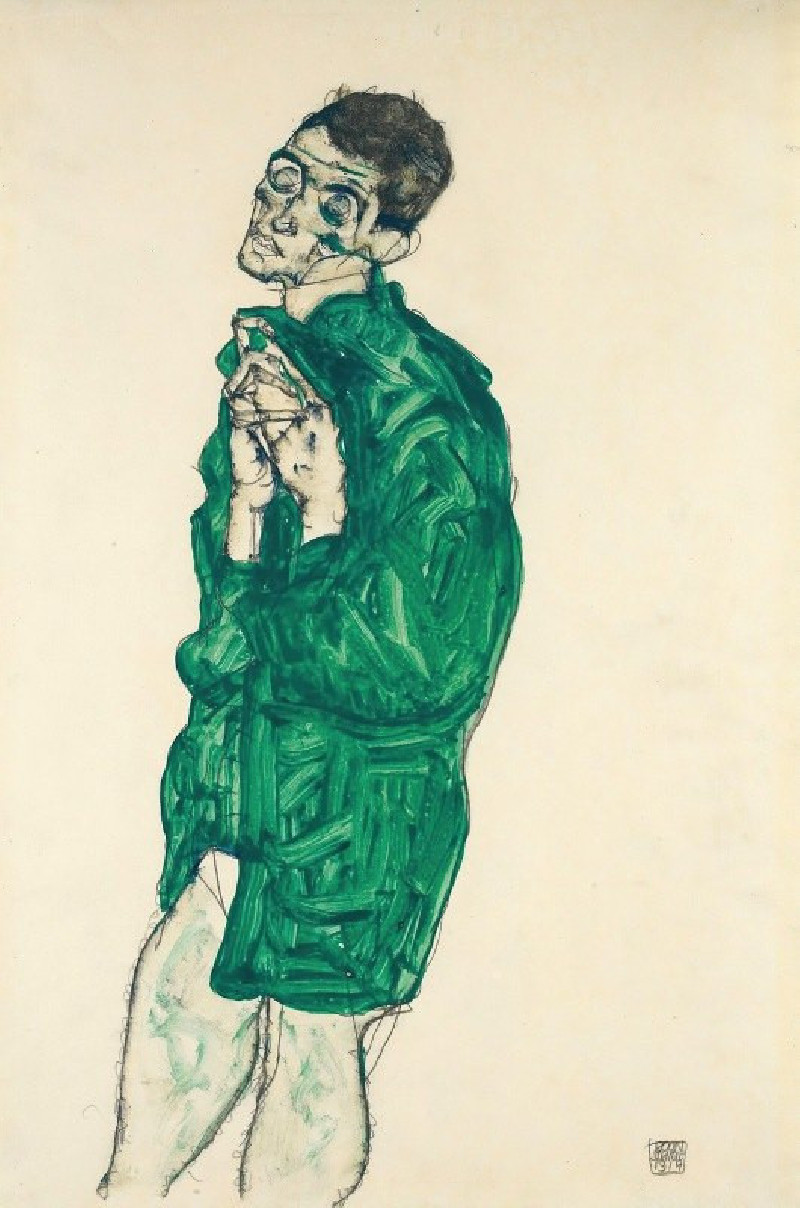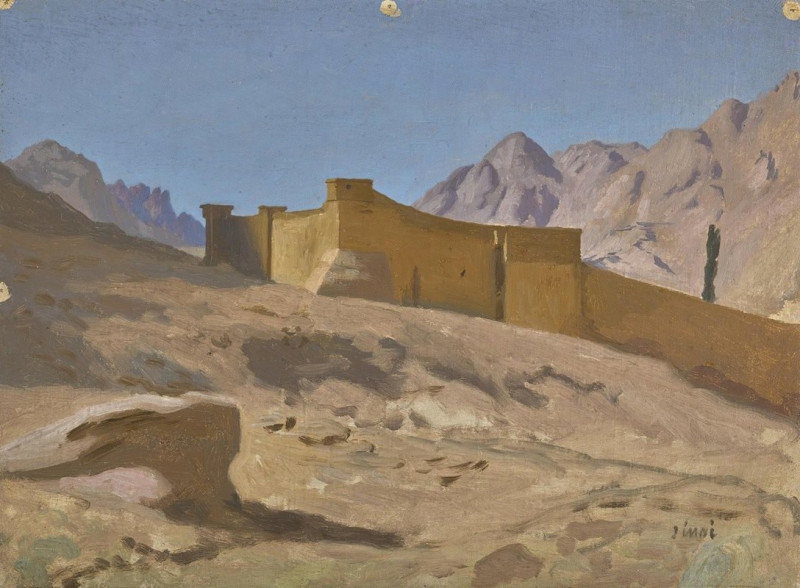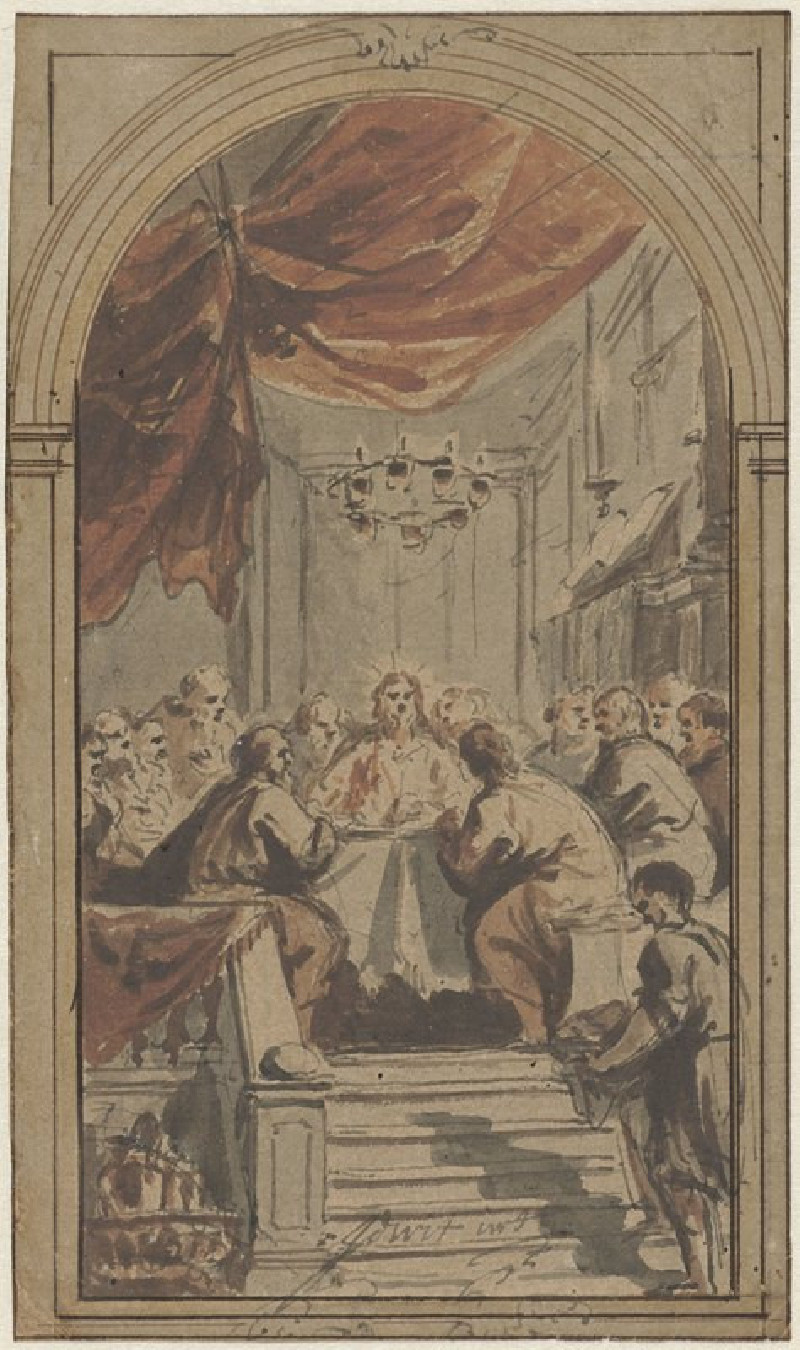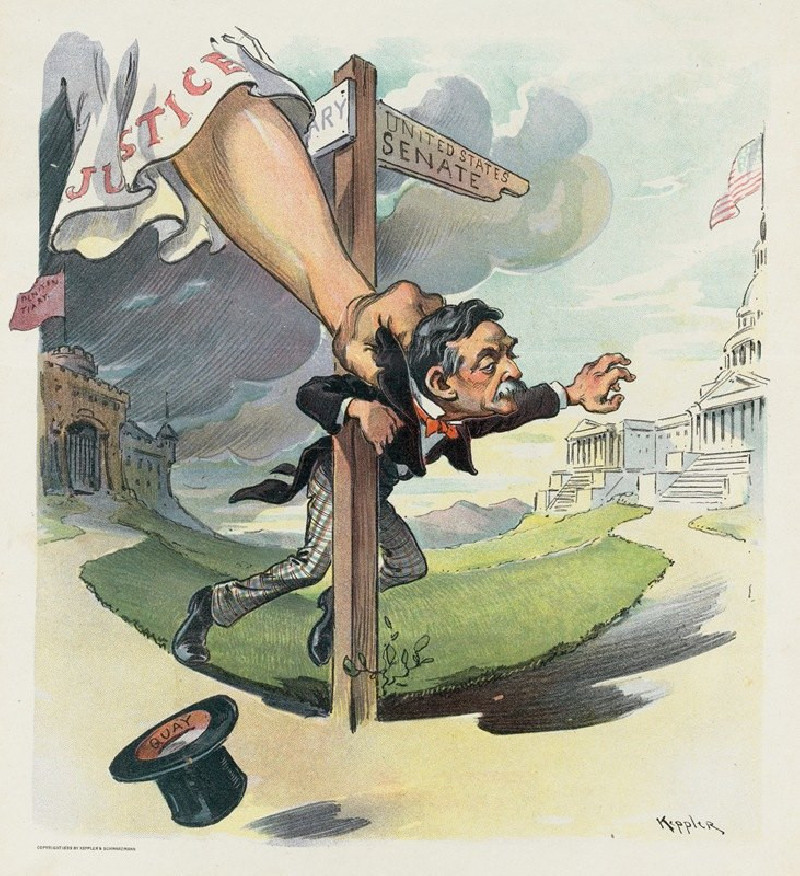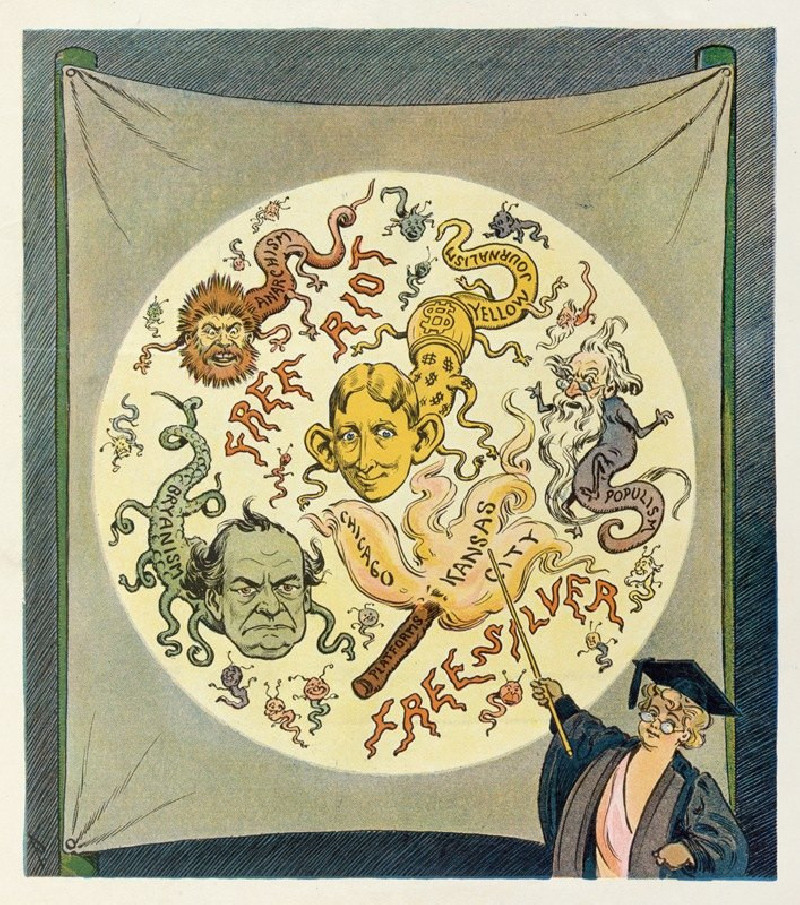Landscape (Evening Landscape) (1889)
Technique: Giclée quality print
Recommended by our customers
More about this artwork
We are pleased to present "Landscape (Evening Landscape)" (1889), a profoundly atmospheric work by the esteemed American artist George Inness. In this masterpiece, Inness captures the serenity and fleeting beauty of a sunset with a fluid, almost ethereal touch, making it a luminous example of his mature style.At the heart of this painting is a tranquil pastoral scene bathed in the warm, glowing light of the evening sun. The sun itself, a bold, orange sphere, hangs low in the sky, casting a radiant backdrop of golden and crimson hues that permeate the scene with a sense of calm and quiet grandeur. The landscape below is rendered in rich, muted tones of green and brown, suggesting the lushness of the earth in contrast to the drama of the sky.Foreground elements include a sparse delineation of grass, a gently winding path, and a peacefully grazing cow, all of which draw the viewer's eye towards the horizon. The composition is balanced by the elegant, solitary silhouette of a tree to the left, acting both as a witness to the daily spectacle of the setting sun and as a structural anchor within the lush expanse.The treatment of light and shadow, characteristic of Inness's later works, shows his continued exploration of the harmonious interplay between nature and the spiritual, encouraging contemplation and inner reflection. This painting not only showcases Inness’s skill with color and form but also his ability to infuse his landscapes with emotional depth and sublime beauty."Landscape (Evening Landscape)" invites viewers to pause and marvel at the simplicity and profundity of the natural world, reflecting George Inness's profound reverence for the divine in nature.
Delivery
Returns
George Inness (May 1, 1825 – August 3, 1894) was a prominent American landscape painter.
Now recognized as one of the most influential American artists of the nineteenth century, Inness was influenced by the Hudson River School at the start of his career. He also studied the Old Masters, and artists of the Barbizon school during later trips to Europe. There he was introduced to the theology of Emanuel Swedenborg, which was significant for him; he expressed that spiritualism in the works of his maturity (1879–1894).

